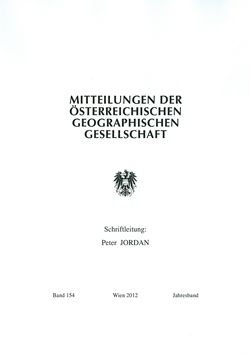
Mitteilungen der Österreichischen Geographischen Gesellschaft Band 154/2012, pp. 107-128, 2013/01/30
154. Jg. (Jahresband), Wien 2012
Following Hungary’s serious losses of territory after World War I, geography becameregarded as a major tool for the scientific substantiation of claims to territorialrevision by the political elite. The discipline’s position was strengthened, and the vastmajority of geographers supported the political goals of the regime. After 1945, however,Hungary became a part of the Soviet occupation zone. After the violent establishmentof the Communist system, geography was found guilty of having served the interwarpolitical regime. The old ‘reactionary’ and ‘bourgeois’ geography was demolished anda new, Marxist-Leninist geography on Soviet principles was established. The latter wasbased on the concept of economic determinism: ‘physical’ and ‘economic’ geographywere strongly distinguished. Geography became a part of national economic planning.State research institutes and those of the Academy of Sciences, and the CentralPlanning Office became the most important ‘centres of calculation’ where Soviet-type‘big science’ was established. Several ‘old’ geographers were pensioned off or exiledfrom academia; others were driven to the periphery or forced to compromise withthe system. In the meanwhile, all important positions were given to politically loyal‘newcomers’. The international orientation of Hungarian geography changed as well:former German and French influence was followed by a stable orientation towards‘friendly’ Socialist countries, especially towards the USSR.